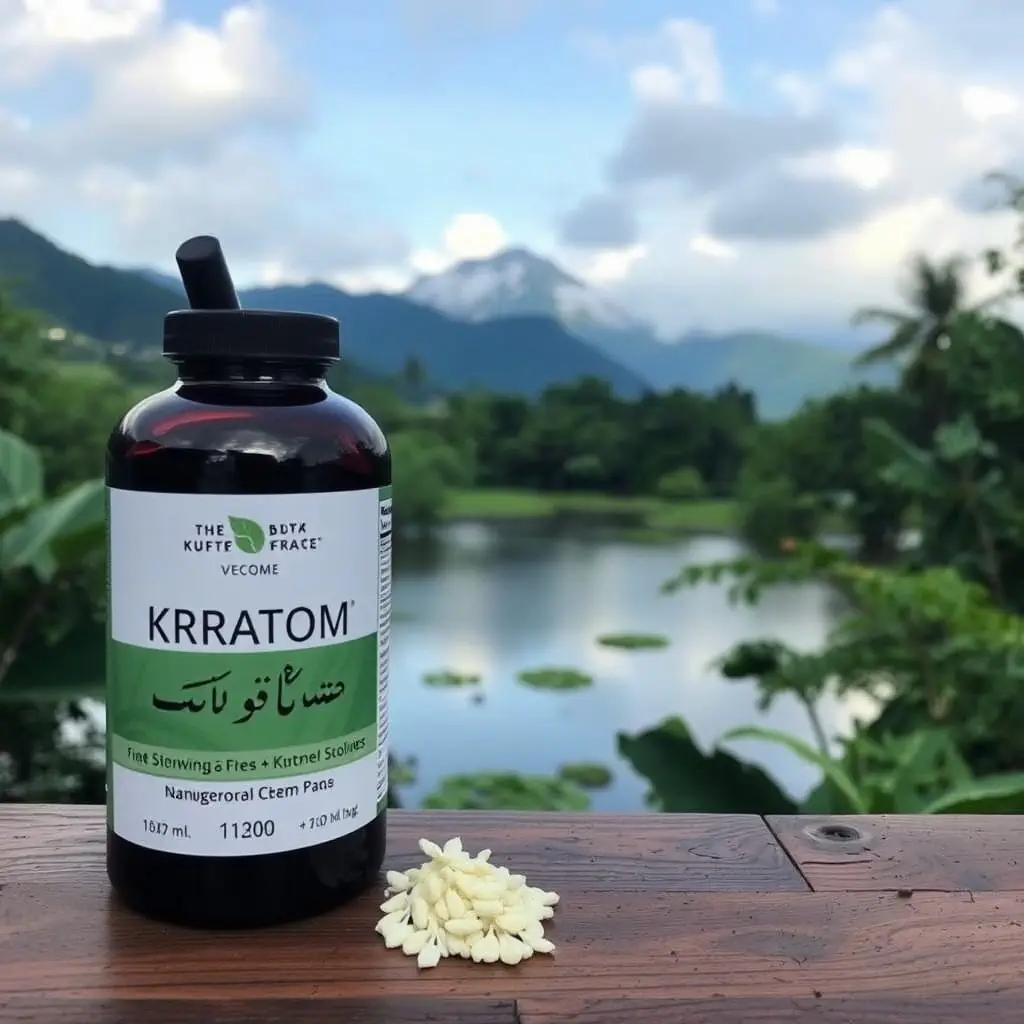Kratom, derived from Southeast Asian plants, is an emerging supplement in athletic and wellness communities for its potential to enhance energy levels and alleviate pain, which may improve stamina, endurance, focus, and pain management during workouts. Its active compounds, mitragynine and 7-hydroxymitragynine, interact with opioid receptors in the brain. However, its use is subject to varying legal statuses worldwide, making it crucial for athletes to understand and comply with local regulations, particularly when traveling with kratom. Legal considerations are paramount as kratom's legality differs by country and region, necessitating thorough research before travel. Safety also demands careful dosage monitoring and consulting with healthcare professionals or sports nutritionists to avoid adverse effects and ensure proper balance for fitness goals. A well-rounded fitness program that includes strength, cardiovascular, and flexibility training, along with balanced nutrition, can work synergistically with kratom's benefits. Staying hydrated and attentive to individual responses to kratom are key for maintaining performance levels. When traveling with kratom, secure packaging, adherence to transportation guidelines, and being aware of the legal status in each destination are essential for a safe and compliant journey. For those considering international travel with kratom, it's advisable to check the specific laws of each country on your route and to pack accordingly to avoid legal complications.
Embarking on a journey to achieve peak physical conditioning often involves a comprehensive approach, balancing rigorous training regimens with effective recovery strategies. Kratom, a naturally occurring substance derived from the Mitragyna speciosa tree, has garnered attention for its potential role in enhancing athletic performance and aiding muscle recovery. This article delves into optimizing your training for peak conditioning by incorporating kratom responsibly. We will explore how kratom can be a valuable tool for athletes looking to elevate their game, including insights on its effects on stamina and endurance. Furthermore, as individuals increasingly integrate kratom into their fitness routines, it’s crucial to navigate travel with kratom considerations—legal status and best practices for transporting it across borders will be discussed. Understanding the nuances of kratom’s role in athletic performance and recovery is essential for anyone interested in this natural supplement’s potential benefits.
- Optimizing Your Training Regimen for Peak Physical Conditioning with Kratom
- Understanding Kratom's Role in Enhancing Athletic Performance and Recovery
- Navigating Travel with Kratom: Legal Considerations and Best Practices
Optimizing Your Training Regimen for Peak Physical Conditioning with Kratom

Integrating kratom into your training regimen can be a strategic approach to enhance physical conditioning, provided it is used responsibly and within legal frameworks. When considering travel with kratom, it’s essential to be aware of its legal status in different regions, as regulations can vary widely. For those who choose to include kratom as part of their fitness journey, the alkaloids found in kratom leaves, such as mitragynine and 7-hydroxymitragynine, may offer benefits that support stamina and endurance during workouts. Users often report a heightened level of focus and reduced perception of pain, which can be advantageous for pushing through intense training sessions. To optimize your conditioning, it’s crucial to tailor your dosage carefully; too much can lead to adverse effects and hinder performance. Consulting with a healthcare professional or a kratom expert is advisable to navigate the right balance for your individual needs and ensure that kratom complements your training rather than compromises it. Additionally, a well-rounded fitness program that includes strength, cardiovascular, and flexibility training, combined with proper nutrition, will lay the foundation for peak physical conditioning when augmented by kratom’s potential benefits. Remember to stay hydrated and monitor how kratom affects you over time, as individual responses can differ significantly. Safe travel with kratom, when legally permissible, involves secure packaging and adherence to transportation guidelines, ensuring that your supplementary approach to fitness is both effective and compliant.
Understanding Kratom's Role in Enhancing Athletic Performance and Recovery

Kratom, a plant native to Southeast Asia, has garnered attention in various health and wellness circles for its potential effects on energy levels and pain relief, which can be pivotal in the context of athletic performance and recovery. When considering how to incorporate kratom into an athletic regimen, it’s crucial to understand the nuances of its interaction with the body. Alkaloids found within kratom leaves, primarily mitragynine and 7-hydroxymitragynine, are thought to influence the brain’s opioid receptors, potentially enhancing stamina, reducing fatigue, and accelerating recovery by modulating pain perception. These effects can be particularly advantageous for athletes who engage in intense training or competition, looking to maximize their physical capabilities while mitigating the toll on their bodies.
However, it’s important to approach kratom with caution, especially when traveling or crossing international borders. The legal status of kratom varies by country and region, and its transportation may be subject to strict regulations. When planning to travel with kratom products, thorough research is necessary to comply with local laws. Additionally, athletes should consider the timing of kratom consumption carefully, as it can affect their performance and might have a stimulating or sedating effect depending on the strain and dosage. It’s also advisable to consult with healthcare professionals or sports nutritionists before integrating kratom into an athletic training program to ensure safety and legality, especially given its potential for interaction with other substances and its impact on different biological systems. Understanding kratom’s role in enhancing athletic performance and recovery requires a balanced approach that takes into account both its purported benefits and the legal considerations associated with its use.
Navigating Travel with Kratom: Legal Considerations and Best Practices

When planning travel with kratom, it’s crucial to be well-informed about the legal status of this supplement in your destination and all transit countries. Kratom legality varies across nations; while some countries may permit its use, others have strict regulations or outright bans. Before you embark on your journey, verify the current laws regarding kratom through official government or health department channels of the countries on your itinerary. This due diligence ensures that you comply with local laws and avoid any legal complications.
Additionally, when packing your kratom, adhere to airline regulations and carry-on guidelines to prevent unintended issues with customs officials. It’s advisable to keep the kratom in its original packaging, with labeling that clearly identifies it as a dietary supplement. This not only facilitates easy identification but also helps in cases where officials may be unfamiliar with the product. Furthermore, consider bringing a copy of any relevant documentation that supports the legal status of kratom, such as a prescription or a note from a healthcare provider if required. By taking these precautions, you can navigate travel with kratom more confidently and ensure a smoother journey.
Reaching peak physical conditioning is a multifaceted endeavor that involves rigorous training, precise recovery protocols, and a deep understanding of how supplements like kratom can enhance athletic performance. This article has delved into the nuances of optimizing your training regimen with kratom’s unique properties, shedding light on its potential role in elevating endurance, stamina, and overall performance. Furthermore, it has provided a comprehensive overview of how kratom can aid in recovery processes, offering insights into its therapeutic effects that are crucial for athletes pushing their limits.
When considering the use of kratom as part of your fitness journey, it’s imperative to stay informed about legal restrictions and best practices, particularly when traveling internationally. The guidance on navigating travel with kratom ensures that individuals can make informed decisions, adhering to regulations while maintaining their health and performance goals.
In conclusion, integrating kratom into your training regimen can be a strategic approach to achieving peak physical conditioning, provided it is used responsibly and in accordance with the law. Always prioritize consultation with healthcare professionals and stay abreast of legal considerations when incorporating kratom into your fitness routine, especially during travel. With the right knowledge and adherence to guidelines, you can safely harness the potential benefits of kratom for optimal athletic performance.






